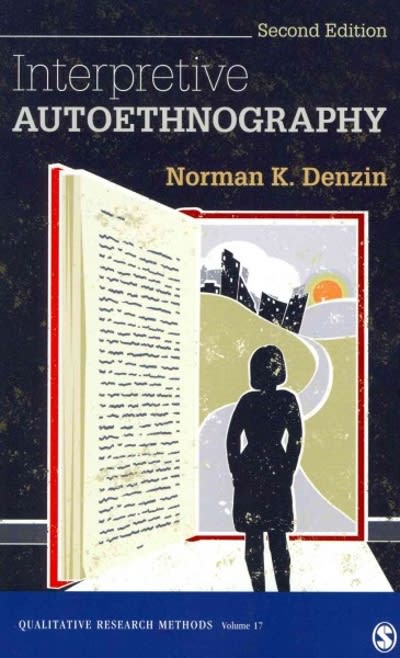Question
WHat is a DSM 5TR diagnosis for this case study: Mr. M is 26 years old, single, and unemployed. He has a 6-year history of
WHat is a DSM 5TR diagnosis for this case study: Mr. M is 26 years old, single, and unemployed. He has a 6-year history of
;>,"Jci,,_., ., ; illness and is being treated in the aftercare program of a university
hospital. He lives in a supervised apartment and is supported by Sup
plemental Security Income and Medicaid. The staff, frustrated by Mr. M's
limited gains despite their active psychopharmacological and rehabilitative
interventions, have prompted his presentation at a grand rounds for review
and reassessment. Mr. M remains partly symptomatic and cannot function
either vocationally or in peer relationships. Nevertheless, he and his parents
continue to expect that he will become "normal" and be able to work.
As a child, Mr. M manifested a peculiar detached manner and consequently
had trouble forming friendships. When he was I 2, psychiatric consultation
revealed a "personality problem." When he was 13, Mr. M's
mother was diagnosed with cancer, and she died after 3 years of debilitating
illness. During this period, Mr. M began weekly psychiatric treatment that
continued for 5 years.
Despite declining school performance, Mr. M graduated from high school
at age 18 and started college. He failed all his first-semester courses and returned
home where he was socially isolated and unemployed. When he was 19
years old, a new psychiatrist diagnosed Mr. M with :a. me;.,+.,\ cl,,sot-:l,.,..
Psychological testing suggested "passive-aggressive
individual with high anxiety and marked passive-dependency needs."
Mr. M's first_ _ episode and hospitalization occurred when he was
20, within a week of his father's remarriage. He had delusions of grandeur, insisting
he could fly, and became sexually preoccupied and aggressive. Mental
status examination revealed a suspicious, agitated man with inappropriate and
blunted affect and thought processes characterized by derailment and racing.
He felt that he could read minds and that sometimes his thoughts were not his
own. He had vague suicidal and homicidal ideation without suicidal intent.
Chlorpromazine 400 mg/day was prescribed. Mr. M's symptoms improved
somewhat, and he was discharged after 3 weeks.
Mr. M returned home to his family, began treatment with a new private
psychiatrist, and entered a rehabilitative day hospital program and
family therapy. At home, Mr. M had a very sheltered, undemanding role
characterized by parental overinvolvement, protectiveness, and infantilization.
For the next 2 years in the day program, he was socially isolated, had
poor concentration, and frequently displayed provocative and intrusive behavior
and depressive symptoms. Although Mr. M's parents were critical of
his poor performance, they also showed strong denial about his degree of
dysfunction. \JI/hen he was 22, his stepmother gave birth to a son. Mr. M's symptoms grew worse, and his parents decided to place him in an out-of-state residential program. Soon after, he had a second florid decompensation and was hospitalized in a condition similar to his first episode. Mr. M was treated with an average of 40 mg/day of haloperidol and improved slightly. Because of the manic features in his presentation, his diagnosis was changed: He was started on lithium and soon grew more subdued and better able to focus. He had a more appropriate affect and was less hypersexual and delusional, although decreased concentration and intermittent childish impulsivity persisted. After 2 months, Mr. M was discharged on haloperidol (IO mg/ day) and lithium (900 mg/day). His lithium level was stable at I mEq/L. He was placed in a supervised apartment program and continued in the day program. He also continued outpatient treatment with his inpatient resident physician and over the next 2 years was maintained on low doses of haloperidol (5-10 mg/day) and lithium (900 mg/day). Although periodically symptomatic, he was never overtly psychotic. Despite extensive work rehabilitation programs, Mr. M's prevocational and social functioning remained marginal. At age 23, he was referred Despite extensive work rehabilitation programs, Mr. M's prevocational and social functioning remained marginal. At age 23, he was referred to a new day program for ongoing social and vocational rehabilitation while continuing in the hospital's outpatient clinic, an "alumni group," and a family group with his parents. Several months later, Mr. M was reassigned to a new female resident psychiatrist. The patient showed a resurgence of paranoid symptoms and would often call home for reassurance. Because mood symptoms were not prominent, the new resident reformulated the diagnosis. Haloperidol was increased from 5-20 mg/day, and lithium was discontinued without any evident change in symptoms. Five months later, Mr. M's paranoid symptoms increased again despite the additional haloperidol. This development convinced another new resident to try a higher dose of anti psychotics, and the haloperidol was pushed to SO mg/day. After 2 months, Mr. M showed minimal symptom improvement. Medications were switched from haloperidol to fluphenazine hydrochloride with moderate improvement. Still another resident was assigned to Mr. M's case 4 months later. Mr. M continued to have "paranoid episodes" every 2 or 3 days, accompa-nied by intense anxiety. His stepmother noted that for the past 6 months his calls home had increased in frequency. He complained of being afraid to leave his apartment and showed suicidal ideation, which he denied. During these episodes, he usually responded to neuroleptic medication, support, and reassurance.
Step by Step Solution
There are 3 Steps involved in it
Step: 1

Get Instant Access to Expert-Tailored Solutions
See step-by-step solutions with expert insights and AI powered tools for academic success
Step: 2

Step: 3

Ace Your Homework with AI
Get the answers you need in no time with our AI-driven, step-by-step assistance
Get Started


